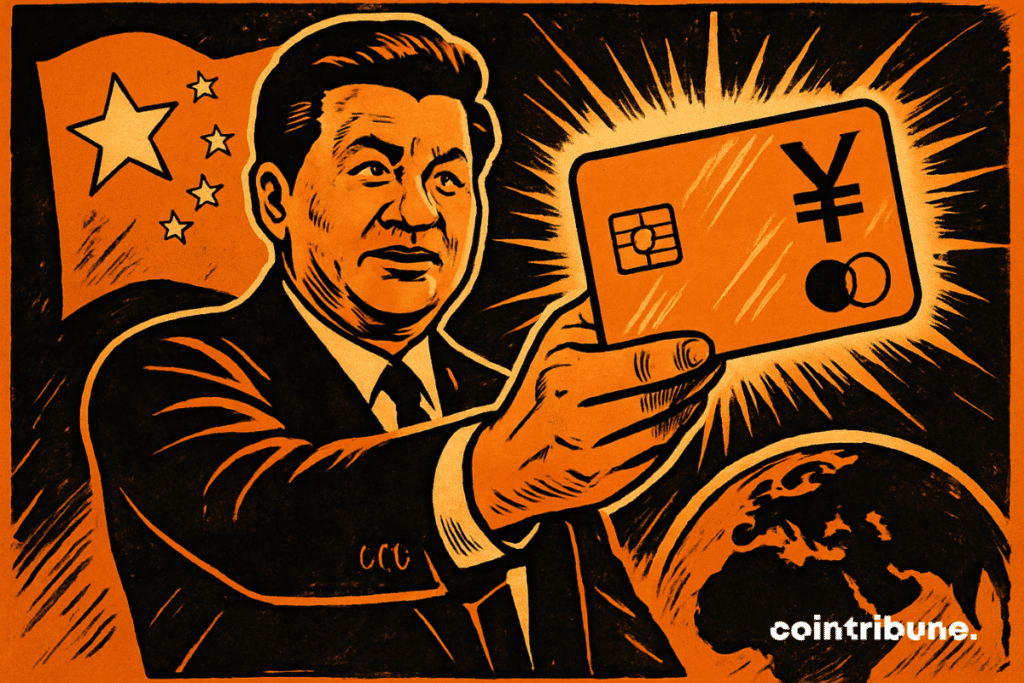BRICS Shakeup: China Rolls Out Homegrown Payment System to Challenge SWIFT Dominance
Beijing’s latest power play—BRICS nations get a fresh alternative to Western financial rails as China activates its cross-border payment network. No more begging for SWIFT access.
The tech specs? State-backed, yuan-denominated, and built to bypass dollar hegemony. Early adopters include sanction-fatigued regimes and crypto-wary central banks.
Wall Street shrugs—until they see the transaction volume. Another brick in the dedollarization wall, or just geopolitical theater? Either way, the Fed’s watching.

In Brief
- China formalizes an ambitious plan to promote its own international payment system.
- Shanghai becomes the nerve center for developing the CIPS network, a direct alternative to SWIFT.
- Beijing aims to strengthen the use of the yuan in cross-border trade and support its companies abroad.
- The project intends to reduce the BRICS’ dependence on the US dollar and consolidate their financial autonomy.
Beijing Accelerates the Promotion of Its International Payment System
The Shanghai municipal government, with the support of the People’s Bank of China (PBoC), officially launched an ambitious plan to increase the use of the yuan in cross-border transactions.
This plan “aims to develop an independent international payment system” based on the Cross-Border Interbank Payment System (CIPS), a network that already includes over 1,300 financial institutions across 110 countries.
Chinese authorities clarify their objective:
Increase the internationalization of the yuan and support the expansion of Chinese companies abroad.
CIPS is presented as a credible alternative to SWIFT, which has so far dominated the international payments sector.
The major pillars of the plan include:
- Strengthening CIPS to promote direct cross-border settlements in yuan;
- Optimizing multinational financial services, particularly in Shanghai, to facilitate commercial exchanges;
- Supporting Chinese companies internationally by offering financing and payment solutions alternative to the US dollar;
- Reducing dependence on the SWIFT network and thereby decreasing exposure to external financial pressures.
The strategic choice of Shanghai to lead this offensive is no coincidence. The city plays a pivotal role in the Chinese economy and serves as a laboratory for international financial reforms. This deployment is part of a broader dynamic linked to the Belt and Road Initiative (BRI), which aims to weave a yuan-dominated exchange network.
Towards a Disintermediation of the Dollar in BRICS Transactions
Beyond simply strengthening CIPS, China now expresses its intention to reshape the global financial architecture by offering the BRICS members a true alternative to the dollar.
The project supported by the PBoC indeed plans to “promote cross-border settlements in yuan” among member countries, marking a major strategic shift. The aim is to facilitate exchanges within the economic bloc but also to reduce exposure to the American banking system, seen as a geopolitical leverage.
The development of an autonomous payment ecosystem could profoundly transform the dynamics of international trade. By supporting bilateral financial flows with strategic partners through CIPS, China thus hopes to cement its economic influence while encouraging the adoption of the yuan in global exchanges.
Such a strategy fits into a trend observed in several recent BRICS initiatives, which aim to promote the use of local currencies and establish independent financial institutions.
This evolution raises multiple questions about the future of the international monetary system. If the transition toward a multipolar world in the field of payments accelerates, it could weaken the dollar’s preeminence and trigger profound restructurings in financial markets. Ultimately, the rise of an autonomous BRICS payment system could offer emerging countries greater economic maneuvering capacity, which would also lead to tensions with defenders of the current monetary order.
Maximize your Cointribune experience with our "Read to Earn" program! For every article you read, earn points and access exclusive rewards. Sign up now and start earning benefits.

